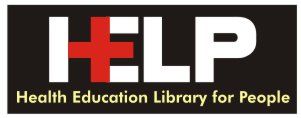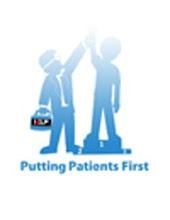
2nd Annual Conference: Sunday, 9th October'11 Nehru Center, 10.30a.m.
Mr Rathod had been experiencing pain in his abdomen, so he went to his GP for a check-up. After examining the test reports, his doctor told him that he had ‘Choledocholithiasis’. Mr Rathod was taken aback, thinking it was a serious disease, only to breathe a sigh of relief when he was informed that the simpler definition for his ailment was ‘gallstone in the gallbladder’, a fairly common condition which is easily treatable. When it comes to interacting with patients, using simple, jargon-free language is of the essence. Imagine if a doctor told you that you had ‘Xerostomia’? You would think ‘oh, woe is me.’ Well, all it means is that you have a dry mouth! So how do doctors communicate in an unambiguous manner to their medically uninformed patients? Information Therapy to the rescue, again!
The word doctor is derived from the Latin word, docere, which means to teach! Teaching patients is a doctor’s second nature, right? Most doctors definitely think so! The majority of doctors feel that they have impeccable bedside manners and excellent communication skills. Illusory superiority is a cognitive bias which afflicts doctors as well. Doctors are not immune to the Lake Wobegon effect (named after Garrison Keillor’s fictional town where ‘all the children are above average’). Communication, however, is a two-way street, and sadly, most patients do not think that doctors are good teachers. Naturally, all patients want detailed information regarding their ailments and subsequent course of treatment, and they feel that their doctors do not bother devoting enough time explaining them their problems. Additionally, many patients feel that when doctors do explain, they use complicated medical jargon that is beyond the understanding of the average person. Patients also feel that sometimes their doctors seem too caught up and unapproachable, so they hesitate in asking too many questions.
If doctors are indeed smart and know that patients want more information about their illnesses, then why don’t doctors routinely prescribe Information Therapy? There is no conspiracy of silence here ! The sad truth is that most doctors simply do not understand the importance of Information Therapy. It is not that doctors enjoy keeping their patients in the dark, so they can extract money from them! Most doctors are happy to share information with their patients, and educating them will not turn them into doctors. Patients will still need to come to their doctor to get the treatment they need! The core problem is that educating patients is still not a top priority for doctors. They have a completely different worldview. Since they are doctors and know a lot about medicine, they sometimes assume that their patients are equally well-informed, which of course is not the case. Many will use jargon without even realizing that it is going above the patient’s head. ‘Medicalese’ has become their primary language!
Doctors suffer from the ‘curse of knowledge’, just like all of us. We know what we know, and we know it so well that we assume that everyone else knows it just as well as we do. This is why doctors sometimes overestimate the ability of their patients to understand what they are talking about – they naively believe that if they know all these medical terms, their patients will too! Moreover, most doctors’ primary focus is providing clinical care. Sometimes, they are so busy doing this that they just don’t have time to educate their patients. There is no question that doctors are busy people, and they will always remain busy. However, if doctors can provide their patients with tools that make it easy to for them to prescribe Information Therapy without disrupting their workflow, they will be happy to do so!
The trick is to make the patient do the work, using the self-service model supermarkets do, versus the old fashioned kirana shop! In the kirana store, all products are fetched by an assistant from shelves while customers wait in front of the counter and indicate the items they want. This is very labor-intensive and therefore also quite expensive. The shopping process is slow, since the number of customers who can be attended to at one time is limited by the number of staff employed in the store. The concept of a self-service grocery store was developed by American entrepreneur Clarence Saunders who started ‘Piggly Wiggly’ stores in 1916. Today, supermarkets stock shelves at night so that customers, the following day, can obtain their own goods and bring them to the front of the store to pay for them. This way, they can service a much larger number of customers by making them do the work! Similarly, Information Therapy tools allow patients to serve themselves, so their doctor’s precious time can be used for more productive and empathetic patient interaction.
What can we do to persuade doctors to prescribe Information Therapy routinely?
1.Some will start doing so when they realize the value that Information Therapy adds to their practice – and to their patients. These are the ‘early adopters’ – who pick up on new trends, and use them cleverly. They take pride in delighting their patients; and will use new technology and tools to do so.
2.Many will prescribe Information Therapy when they see leading doctors doing so regularly. We are all social animals, and the herd mentality is strong amongst doctors as well!
3.Some will start when they are pushed into doing so by their patients. Patients do have clout, even though they often do not realize it! Doctors cannot survive without patients, and if enough patients start clamouring for information, doctors will toe the line and start offering it!
4.Let us not forget that doctors are rational human beings, and will respond appropriately to the right financial incentives. Once they get paid for providing Information Therapy (either by the government or by health insurance companies), many will routinely start providing this to their patients.
Doctors must be provided with access to a wide variety of inexpensive, easy-to-use tools, so that they can easily prescribe Information Therapy. Different doctors have different working styles and their patients have different learning needs. The good news is that it is possible to use technology cleverly and efficiently, so that we can cater to these diverse requirements by using a combination of text, audio and video, which can be tailored to the individual patient’s and doctor’s needs. Sadly, many doctors are still unaware of the wide variety of tools which are already available for educating patients; this is why they still don’t make effective use of them. Perhaps, some technology therapy needs to be prescribed to doctors first so that they are well-equipped to dispense Information Therapy to their patients!
Register for the 2nd Annual Conference on Using Information to Put Patients First : www.patientpower.in



No comments:
Post a Comment